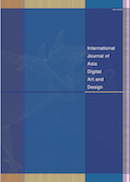All issues

Volume 24 (2020)
- Issue 2 Pages 8-
- Issue 1 Pages 1-
Volume 24, Issue 2
Displaying 1-2 of 2 articles from this issue
- |<
- <
- 1
- >
- >|
-
Mingoo Kwak, Joonseo Lee2020 Volume 24 Issue 2 Pages 8-14
Published: 2020
Released on J-STAGE: November 20, 2020
JOURNAL FREE ACCESSBackground This research focuses on the transition from the product to service as a brand communication strategy, adopting a semiotic perspective with structural analysis. While sharing the same point of view from the existing service design research, that is focused on service as a business opportunity for manufacturers, this study analyzes the structure of brand communication to find the strategic orientation and to design the new form of strategy. Methods The theoretical base of this study is from Greimas’ Semiotic Square; the tool to analyze the structure and to understand the depth of journalism. The research carries out a case review to build an appropriate model by reconstructing the Semiotic Square. About ten communication practices from the global brands were analyzed: copy, situation, concept, and context to study the elements of brand communication. Results The analysis of the case review shapes the structure of brand communication. Strategy Square is a model reconstructed from the semiotic square, containing the elements found in each case review. The model has three stages; emotional, experience, and interpret. As a decoding feature, the model analysis finds three strategy types in automotive industry cases. As a result, this study leads to a new strategy developed specifically for Hyundai Motor Company. Conclusion Three strategy types are suggested through the case review. This strategy type provides a way to interpret manufacturers’ strategic orientation, but is also suggested as a tool to design service. Specifically, this study identifies the factors that the manufacturers capture in their intention to engage with customers. Furthermore, service design becomes an opportunity for both leading and following automotive corporate because of the changing paradigm of service strategy. The strategic orientation on service may determine the solidity and the clarity of brand communication.View full abstractDownload PDF (1863K) -
Lin Xiao, Hyun Seok Lee2020 Volume 24 Issue 2 Pages 15-21
Published: 2020
Released on J-STAGE: November 20, 2020
JOURNAL FREE ACCESSWhile viewing animation, audience members actually perceive the visual attributes of each animated character differently due to the disparity in knowledge audiences maintains for each Kansei image. This study combines semisemi-structured intervi ews with the KJ Method to investigate the influence of Kansei images on the design of animation characters. A group of twenty different audiences was recruited for the study. The animation Ne Zha was adopted as a case study. In their descriptions of Kansei images, the respondents adopted an overall descriptive method to a partial one. Results were more consistent for Kansei images with eye eye-catching features and vivid colors. The interviewees’ nationalities, professional backgrounds, and experience viewing t he animation had no significant influence on their Kansei image descriptions. The results of this study provide a reference for animation character designers to transfer script texts into images. Keywords:View full abstractDownload PDF (7383K)
- |<
- <
- 1
- >
- >|